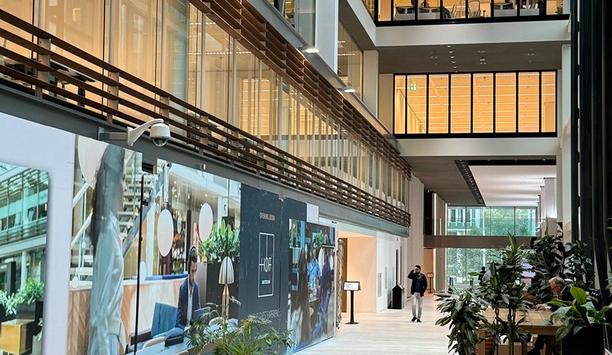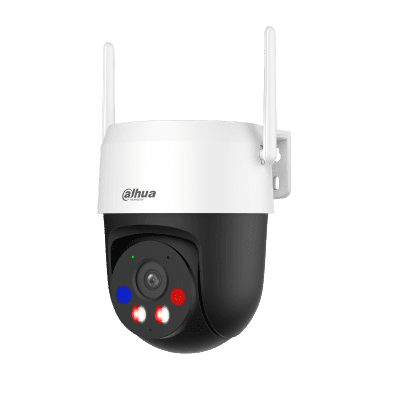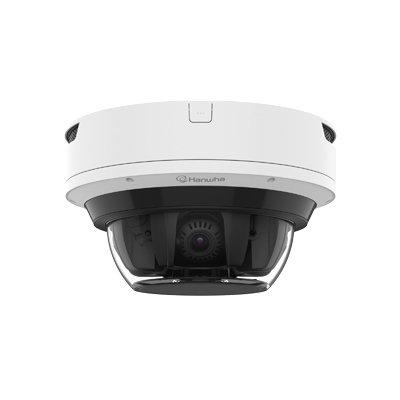At the BSIA (British Security Industry Association) we are all for a considered debate regarding CCTV and its effectiveness. In the past, for instance, we have welcomed the efforts of the House of Lords Constitution Committee and other reports and views on this critical area. Whilst we may not have agreed with all of their respective recommendations we were, at least, reassured that the issue was being approached with some semblance of balance, and the resulting documents had benefited from the input of a range of interested parties including members of the public, end users, civil liberties groups and the police.
It would be difficult to argue that the report on CCTV which emerged last month from Big Brother Watch - an offshoot of the Taxpayers Alliance - was not created, from the start, with an anti-CCTV agenda in mind. The very title of the campaign - Big Brother Watch - is a none too subtle clue to the approach it is taking. Even a cursory glance at the document gives the game away, and underlines the fact that any conclusions reached have been to a large extent preordained, to quote: "Big Brother Is Watching is the first report to bring together the various arguments against CCTV." Although the report does go on to say that Big Brother Watch is 'not opposed to CCTV per se', this is followed by a selection of quotes regarding CCTV which have obviously been selected to portray CCTV in the worst possible light, backed by instances where apparently CCTV images were not of sufficient quality or CCTV systems were not operational.
There are always two sides to any story and by omitting to mention even one positive example of CCTV in practice we would contend that Big Brother Watch's report fails the credibility test at the very first hurdle.
 |
| Despite the negative portrayal of CCTV, surveillance cameras are instrumental in fighting crime and terrorism |
The figures gleaned from Big Brother Watch's Freedom Of Information request to local authorities regarding the number of cameras they operate, means very little when taken in isolation. It would have been much more instructive to have actually asked the authorities in question to provide some qualitative or quantitative data regarding how CCTV is actually applied in their areas including the specific benefits and shortcomings. Instead we are presented with five so-called 'case studies' where the conclusions reached by Big Brother Watch are seriously flawed. For instance it is noted that 'in mid-2009 Staffordshire Moorlands spent £500,000 implementing a new CCTV system' with Big Brother Watch contending that this money could instead have been used to fund 22 new police officers. This crude calculation is simply based on a year of salaries for these officers. A more realistic and reasonable comparison would have taken into account the anticipated operational life of the CCTV system thereby dramatically reducing the number of officers highlighted - potentially to a handful - far removed from the Big Brother Watch's headline grabbing figure.
The message has to be that if anyone is looking for a serious, balanced, report which is going to add substantially to the CCTV debate they should look elsewhere. The reality is that it takes little effort to adopt a one-sided, wholly negative of view of CCTV. It is a sad indictment of Big Brother Watch's approach that they are happy to promote this document as a serious report as opposed to simple collation of CCTV camera numbers to bookend something, which is in effect, more akin to an extended 'viewpoint' piece.
Thankfully the experience on the ground of CCTV in Britain is not the doom-laden picture that Big Brother Watch is attempting to portray. Time and again the police take advantage of CCTV images to reconstruct events, identify offenders and make high profile calls on the back of such evidence for public support in their enquiries. Such images are frequently called upon in the criminal justice system to help with cases and to secure prosecutions. Three examples which underline the positive impact of CCTV in solving crimes include the Jamie Bulger case - one of the first times where CCTV was used in a major investigation; the London bombings where images helped to secure convictions for conspiracy to murder for those involved in a follow-up attack to the tragic events of 7/7 and the £53 million Tonbridge depot robbery convictions at the Old Bailey.
CCTV in Britain is not the doom-laden picture that Big Brother Watch is attempting to portray |
At the BSIA we do of course appreciate the need for effective checks and balances on CCTV to maintain public support and, where CCTV is operated, to ensure that it is being used effectively. To this end we have welcomed the Government's announcement of an interim CCTV Regulator. We also take an active role in the implementation Board of the National CCTV Strategy and have a long-term commitment through our CCTV Section to standards, guidance and best practice. When it comes to privacy, for example, the BSIA has published guidance with regards to privacy masking and CCTV in the context of Chip and PIN. At a wider level at the BSIA we were heavily involved in the creation of standards for digital video evidence and for remotely monitored, detector activated CCTV - one of the first documents to cover all aspects of CCTV's deployment from installation to monitoring and long-term maintenance all elements critical to its success.
So to conclude, despite the negative posturing of bodies such as Big Brother Watch we believe that CCTV is a valuable weapon in the fight against crime and terrorism, something which is increasingly being recognised by governments and municipal authorities worldwide.
Examples of the positive impact that CCTV can have in practice can be found at http://www.bsia.co.uk/casestudies/cctv


















